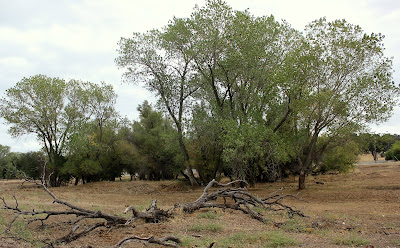When I read this poem I had to share it, because it so
perfectly captures for me the look and feel of the area in which I spent my
growing-up summers, an area that I love deeply and find beautiful, in ways that
may seem puzzling to those who come from more well-watered areas.
Introduction by Ted Kooser: Let’s hope that by the
time this column appears all fires in California have been extinguished. I
wanted to offer you a poem that shows us what that beautiful but arid state can
look like before it’s caught fire. The poet, Dana Gioia, served as Chair of the
National Endowment for the Arts and has been a friend to, and advocate for,
poetry for many years. This poem appeared in the anthology, Fire and Rain:
Ecopoetry of California, from Scarlet Tanager Books.
California Hills in August
I can imagine someone who found
these fields unbearable, who climbed
the hillside in the heat, cursing the dust,
cracking the brittle weeds underfoot,
wishing a few more trees for shade.
An Easterner especially, who would scorn
the meagerness of summer, the dry
twisted shapes of black elm,
scrub oak, and chaparral, a landscape
August has already drained of green.
One who would hurry over the clinging
thistle, foxtail, golden poppy,
knowing everything was just a weed,
unable to conceive that these trees
and sparse brown bushes were alive.
And hate the bright stillness of the noon
without wind, without motion,
the only other living thing
a hawk, hungry for prey, suspended
in the blinding, sunlit blue.
And yet how gentle it seems to someone
raised in a landscape short of rain—
the skyline of a hill broken by no more
trees than one can count, the grass,
the empty sky, the wish for water.
American Life in Poetry is made possible by The Poetry Foundation (www.poetryfoundation.org), publisher of Poetry magazine. It is also supported by the Department of English at the University of Nebraska, Lincoln. Poem copyright ©1986 by Dana Gioia, “California Hills in August,” from Fire and Rain: Ecopoetry of California, (Lucille Lang Day and Ruth Nolan, Eds., Scarlet Tanager Books, 2018). Poem reprinted by permission of Dana Gioia and the publisher. Introduction copyright ©2019 by The Poetry Foundation. The introduction’s author, Ted Kooser, served as United States Poet Laureate Consultant in Poetry to the Library of Congress from 2004-2006. We do not accept unsolicited manuscripts.













